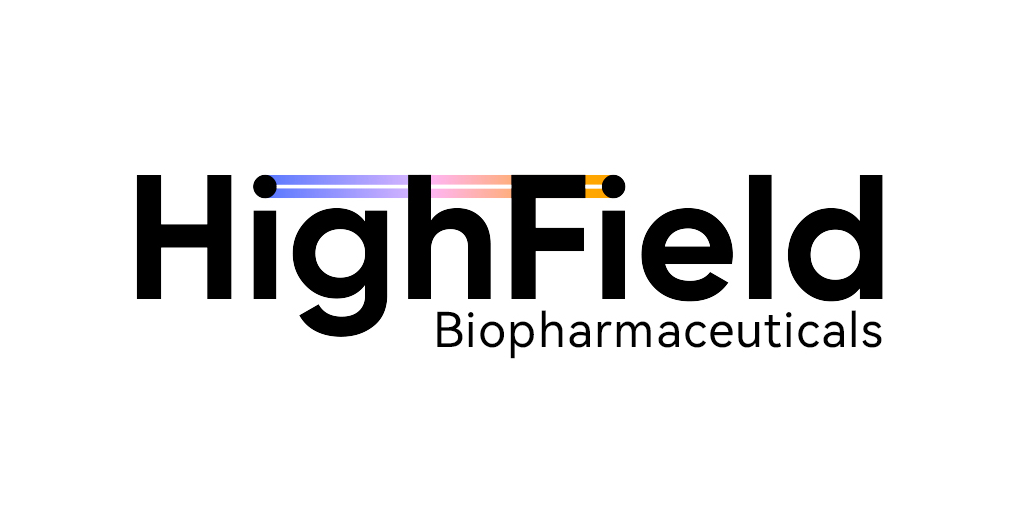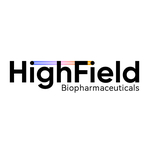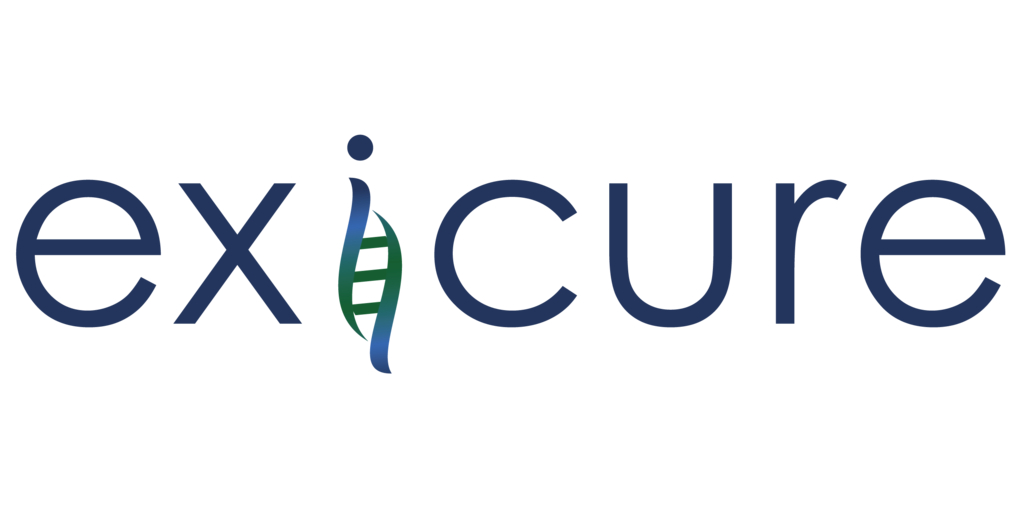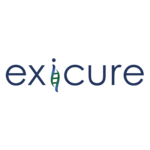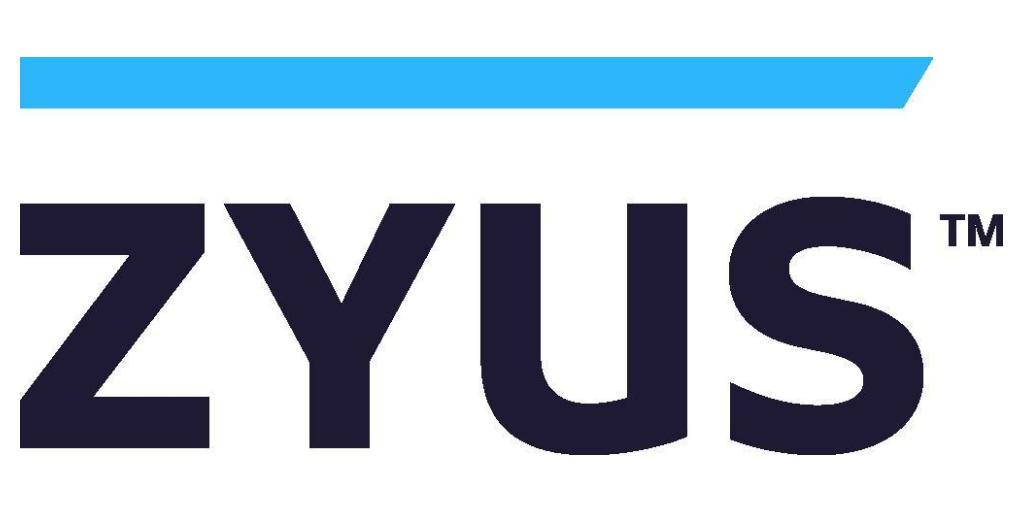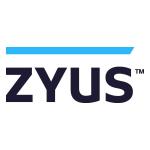ENHERTU® Plus Pertuzumab Demonstrated Highly Statistically Significant and Clinically Meaningful Improvement in Progression-Free Survival Versus THP as First-Line Therapy for Patients with HER2 Positive Metastatic Breast Cancer
ENHERTU® Plus Pertuzumab Demonstrated Highly Statistically Significant and Clinically Meaningful Improvement in Progression-Free Survival Versus THP as First-Line Therapy for Patients with HER2 Positive Metastatic Breast Cancer
-
DESTINY-Breast09 phase 3 trial of Daiichi Sankyo and AstraZeneca’s ENHERTU is the first trial in more than a decade to demonstrate superior efficacy across a broad HER2 positive metastatic patient population versus current first-line standard of care
-
Plans for regulatory submissions are underway
TOKYO & BASKING RIDGE, N.J.–(BUSINESS WIRE)–Positive topline results from a planned interim analysis of the DESTINY-Breast09 phase 3 trial showed ENHERTU® (trastuzumab deruxtecan) in combination with pertuzumab demonstrated a highly statistically significant and clinically meaningful improvement in progression-free survival (PFS) compared to taxane, trastuzumab and pertuzumab (THP) as a first-line treatment for patients with HER2 positive metastatic breast cancer.


ENHERTU is a specifically engineered HER2 directed DXd antibody drug conjugate (ADC) discovered by Daiichi Sankyo (TSE: 4568) and being jointly developed and commercialized by Daiichi Sankyo and AstraZeneca (LSE/STO/Nasdaq: AZN).
The PFS improvement was seen across all pre-specified patient subgroups with ENHERTU in combination with pertuzumab. The key secondary endpoint of overall survival (OS) was not mature at the time of this planned interim analysis; however, interim OS data showed an early trend favoring the ENHERTU combination compared to THP.
The second arm assessing ENHERTU monotherapy versus THP remains blinded to patients and investigators and will continue to the final PFS analysis.
HER2 positive metastatic breast cancer is an aggressive disease driven by overexpression or amplification of HER2 that affects 15% to 20% of patients with metastatic breast cancer.1 While HER2 targeted therapies have improved outcomes, prognosis remains poor with most patients experiencing disease progression within two years of first-line treatment with THP, which has been the standard of care for more than a decade.2,3,4,5 Further, approximately one in three patients never go on to receive treatment following first-line therapy due to disease progression or death.6,7
“The results of DESTINY-Breast09 reinforce the importance of effectively targeting HER2 to achieve durable disease control early in the treatment of HER2 positive metastatic breast cancer,” said Ken Takeshita, MD, Global Head, R&D, Daiichi Sankyo. “Building on the positive results seen with ENHERTU in the second-line setting, these new findings suggest that starting treatment with ENHERTU in combination with pertuzumab at the time of metastatic diagnosis delays disease progression, postponing the time until additional treatment may be needed.”
“This is the first trial in more than a decade to demonstrate superior efficacy across a broad HER2 positive metastatic breast cancer patient population compared to the current first-line standard of care,” said Susan Galbraith, MBBChir, PhD, Executive Vice President, Oncology Hematology R&D, AstraZeneca. “This is a significant milestone for patients and sets the foundation for ENHERTU in combination with pertuzumab as an important treatment option in the first-line HER2 positive setting.”
The safety profile of ENHERTU in combination with pertuzumab was consistent with the known profiles of each individual therapy.
Data from the combination arm of DESTINY-Breast09 will be presented at an upcoming medical meeting and shared with regulatory authorities.
About DESTINY-Breast09
DESTINY-Breast09 is a global, multicenter, randomized, open-label, phase 3 trial evaluating the efficacy and safety of ENHERTU (5.4 mg/kg) either alone or in combination with pertuzumab versus standard of care THP (a taxane [docetaxel or paclitaxel], trastuzumab and pertuzumab) as a first-line treatment in patients with HER2 positive metastatic breast cancer.
Patients were randomized 1:1:1 to receive either ENHERTU monotherapy with a pertuzumab matching placebo; ENHERTU in combination with pertuzumab; or THP. Randomization was stratified by prior treatment (de novo metastatic disease versus progression from early-stage disease), hormone receptor (HR) status and PIK3CA mutation status.
The primary endpoint of DESTINY-Breast09 is PFS as assessed by blinded independent central review in both the ENHERTU monotherapy and ENHERTU combination arms. Secondary endpoints include investigator-assessed PFS, OS, objective response rate, duration of response, pharmacokinetics and safety.
DESTINY-Breast09 enrolled 1,157 patients across multiple sites in Africa, Asia, Europe, North America, and South America. For more information about the trial, visit ClinicalTrials.gov.
About HER2 Positive Metastatic Breast Cancer
Breast cancer is the second most common cancer and one of the leading causes of cancer-related deaths worldwide.8 More than two million breast cancer cases were diagnosed in 2022, with more than 665,000 deaths globally.8 While survival rates are high for those diagnosed with early breast cancer, only about 30% of patients diagnosed with or progress to metastatic disease are expected to live five years following diagnosis.9
HER2 is a tyrosine kinase receptor growth-promoting protein expressed on the surface of many types of tumors including breast cancer.10 HER2 protein overexpression may occur as a result of HER2 gene amplification.2 Approximately one in five cases of breast cancer are considered HER2 positive.11
HER2 positive metastatic breast cancer is an aggressive disease driven by overexpression or amplification of HER2 that affects 15% to 20% of patients with metastatic breast cancer.1 While HER2 targeted therapies have improved outcomes, prognosis remains poor with most patients experiencing disease progression within two years of first-line treatment with THP, which has been the standard of care for more than a decade.2,3,4,5 Further, approximately one in three patients never go on to receive treatment following first-line therapy due to disease progression or death.6,7
About ENHERTU
ENHERTU (trastuzumab deruxtecan; fam-trastuzumab deruxtecan-nxki in the U.S. only) is a HER2 directed ADC. Designed using Daiichi Sankyo’s proprietary DXd ADC Technology, ENHERTU is the lead ADC in the oncology portfolio of Daiichi Sankyo and the most advanced program in AstraZeneca’s ADC scientific platform. ENHERTU consists of a HER2 monoclonal antibody attached to a number of topoisomerase I inhibitor payloads (an exatecan derivative, DXd) via tetrapeptide-based cleavable linkers.
ENHERTU (5.4 mg/kg) is approved in more than 75 countries worldwide for the treatment of adult patients with unresectable or metastatic HER2 positive (immunohistochemistry [IHC] 3+ or in-situ hybridization (ISH)+) breast cancer who have received a prior anti-HER2-based regimen, either in the metastatic setting or in the neoadjuvant or adjuvant setting, and have developed disease recurrence during or within six months of completing therapy based on the results from the DESTINY-Breast03 trial.
ENHERTU (5.4 mg/kg) is approved in more than 75 countries worldwide for the treatment of adult patients with unresectable or metastatic HER2 low (IHC 1+ or IHC 2+/ISH-) breast cancer who have received a prior systemic therapy in the metastatic setting or developed disease recurrence during or within six months of completing adjuvant chemotherapy based on the results from the DESTINY-Breast04 trial.
ENHERTU (5.4 mg/kg) is approved in more than 30 countries for the treatment of adult patients with unresectable or metastatic hormone receptor (HR) positive, HER2 low (IHC 1+ or IHC 2+/ISH-) or HER2 ultralow (IHC 0 with membrane staining) breast cancer, as determined by a locally or regionally approved test, that have progressed on one or more endocrine therapies in the metastatic setting based on the results from the DESTINY-Breast06 trial.
ENHERTU (5.4 mg/kg) is approved in more than 50 countries worldwide for the treatment of adult patients with unresectable or metastatic NSCLC whose tumors have activating HER2 (ERBB2) mutations, as detected by a locally or regionally approved test, and who have received a prior systemic therapy based on the results from the DESTINY-Lung02 and/or DESTINY-Lung05 trials. Continued approval in China and the U.S. for this indication may be contingent upon verification and description of clinical benefit in a confirmatory trial.
ENHERTU (6.4 mg/kg) is approved in more than 65 countries worldwide for the treatment of adult patients with locally advanced or metastatic HER2 positive (IHC 3+ or IHC 2+/ISH+) gastric or gastroesophageal junction (GEJ) adenocarcinoma who have received a prior trastuzumab-based regimen based on the results from the DESTINY-Gastric01, DESTINY-Gastric02 and/or DESTINY-Gastric06 trials. Continued approval in China for this indication may be contingent upon verification and description of clinical benefit in a confirmatory trial.
ENHERTU (5.4 mg/kg) is approved in Brazil, Israel, Russia, Taiwan, U.K. and the U.S. for the treatment of adult patients with unresectable or metastatic HER2 positive (IHC 3+) solid tumors who have received prior systemic treatment and have no satisfactory alternative treatment options based on efficacy results from the DESTINY-PanTumor02, DESTINY-Lung01 and DESTINY-CRC02 trials. Continued approval for this indication may be contingent upon verification and description of clinical benefit in a confirmatory trial.
About the ENHERTU Clinical Development Program
A comprehensive global clinical development program is underway evaluating the efficacy and safety of ENHERTU monotherapy across multiple HER2 targetable cancers. Trials in combination with other anticancer treatments, such as immunotherapy, also are underway.
About the Daiichi Sankyo and AstraZeneca Collaboration
Daiichi Sankyo and AstraZeneca entered into a global collaboration to jointly develop and commercialize ENHERTU in March 2019 and DATROWAY® in July 2020, except in Japan where Daiichi Sankyo maintains exclusive rights for each ADC. Daiichi Sankyo is responsible for the manufacturing and supply of ENHERTU and DATROWAY.
About the ADC Portfolio of Daiichi Sankyo
The Daiichi Sankyo ADC portfolio consists of seven ADCs in clinical development crafted from two distinct ADC technology platforms discovered in-house by Daiichi Sankyo.
The ADC platform furthest in clinical development is Daiichi Sankyo’s DXd ADC Technology where each ADC consists of a monoclonal antibody attached to a number of topoisomerase I inhibitor payloads (an exatecan derivative, DXd) via tetrapeptide-based cleavable linkers. The DXd ADC portfolio currently consists of ENHERTU, a HER2 directed ADC, and DATROWAY, a TROP2 directed ADC, which are being jointly developed and commercialized globally with AstraZeneca. Patritumab deruxtecan (HER3-DXd), a HER3 directed ADC, ifinatamab deruxtecan (I-DXd), a B7-H3 directed ADC, and raludotatug deruxtecan (R-DXd), a CDH6 directed ADC, are being jointly developed and commercialized globally with Merck & Co., Inc, Rahway, NJ, USA. DS-3939, a TA-MUC1 directed ADC, is being developed by Daiichi Sankyo.
The second Daiichi Sankyo ADC platform consists of a monoclonal antibody attached to a modified pyrrolobenzodiazepine (PBD) payload. DS-9606, a CLDN6 directed PBD ADC, is the first of several planned ADCs in clinical development utilizing this platform.
Ifinatamab deruxtecan, patritumab deruxtecan, raludotatug deruxtecan, DS-3939 and DS-9606 are investigational medicines that have not been approved for any indication in any country. Safety and efficacy have not been established.
ENHERTU U.S. Important Safety Information
Indications
ENHERTU is a HER2-directed antibody and topoisomerase inhibitor conjugate indicated for the treatment of adult patients with:
-
Unresectable or metastatic HER2-positive (IHC 3+ or ISH positive) breast cancer who have received a prior anti-HER2-based regimen either:
-
In the metastatic setting, or
-
In the neoadjuvant or adjuvant setting and have developed disease recurrence during or within six months of completing therapy
-
Unresectable or metastatic:
-
Hormone receptor (HR)-positive, HER2-low (IHC 1+ or IHC 2+/ISH-) or HER2-ultralow (IHC 0 with membrane staining) breast cancer, as determined by an FDA-approved test, that has progressed on one or more endocrine therapies in the metastatic setting
-
HER2-low (IHC 1+ or IHC 2+/ISH-) breast cancer, as determined by an FDA-approved test, who have received a prior chemotherapy in the metastatic setting or developed disease recurrence during or within 6 months of completing adjuvant chemotherapy
-
Unresectable or metastatic non-small cell lung cancer (NSCLC) whose tumors have activating HER2 (ERBB2) mutations, as detected by an FDA-approved test, and who have received a prior systemic therapy
This indication is approved under accelerated approval based on objective response rate and duration of response. Continued approval for this indication may be contingent upon verification and description of clinical benefit in a confirmatory trial.
-
Locally advanced or metastatic HER2-positive (IHC 3+ or IHC 2+/ISH positive) gastric or gastroesophageal junction (GEJ) adenocarcinoma who have received a prior trastuzumab-based regimen
-
Unresectable or metastatic HER2-positive (IHC 3+) solid tumors who have received prior systemic treatment and have no satisfactory alternative treatment options
This indication is approved under accelerated approval based on objective response rate and duration of response. Continued approval for this indication may be contingent upon verification and description of clinical benefit in a confirmatory trial.
|
WARNING: INTERSTITIAL LUNG DISEASE and EMBRYO-FETAL TOXICITY
|
-
Interstitial lung disease (ILD) and pneumonitis, including fatal cases, have been reported with ENHERTU. Monitor for and promptly investigate signs and symptoms including cough, dyspnea, fever, and other new or worsening respiratory symptoms. Permanently discontinue ENHERTU in all patients with Grade 2 or higher ILD/pneumonitis. Advise patients of the risk and to immediately report symptoms.
-
Exposure to ENHERTU during pregnancy can cause embryo-fetal harm. Advise patients of these risks and the need for effective contraception.
|
Contraindications
None.
Warnings and Precautions
Interstitial Lung Disease / Pneumonitis
Severe, life-threatening, or fatal interstitial lung disease (ILD), including pneumonitis, can occur in patients treated with ENHERTU. A higher incidence of Grade 1 and 2 ILD/pneumonitis has been observed in patients with moderate renal impairment. Advise patients to immediately report cough, dyspnea, fever, and/or any new or worsening respiratory symptoms. Monitor patients for signs and symptoms of ILD. Promptly investigate evidence of ILD. Evaluate patients with suspected ILD by radiographic imaging. Consider consultation with a pulmonologist. For asymptomatic ILD/pneumonitis (Grade 1), interrupt ENHERTU until resolved to Grade 0, then if resolved in ≤28 days from date of onset, maintain dose. If resolved in >28 days from date of onset, reduce dose 1 level. Consider corticosteroid treatment as soon as ILD/pneumonitis is suspected (e.g., ≥0.5 mg/kg/day prednisolone or equivalent). For symptomatic ILD/pneumonitis (Grade 2 or greater), permanently discontinue ENHERTU. Promptly initiate systemic corticosteroid treatment as soon as ILD/pneumonitis is suspected (e.g., ≥1 mg/kg/day prednisolone or equivalent) and continue for at least 14 days followed by gradual taper for at least 4 weeks.
HER2-Positive, HER2-Low, and HER2-Ultralow Metastatic Breast Cancer, HER2-Mutant NSCLC, and Solid Tumors (Including IHC 3+) (5.4 mg/kg)
In patients with metastatic breast cancer, HER2-mutant NSCLC, and other solid tumors treated with ENHERTU 5.4 mg/kg, ILD occurred in 12% of patients. Median time to first onset was 5.5 months (range: 0.9 to 31.5). Fatal outcomes due to ILD and/or pneumonitis occurred in 0.9% of patients treated with ENHERTU.
HER2-Positive Locally Advanced or Metastatic Gastric Cancer (6.4 mg/kg)
In patients with locally advanced or metastatic HER2-positive gastric or GEJ adenocarcinoma treated with ENHERTU 6.4 mg/kg, ILD occurred in 10% of patients. Median time to first onset was 2.8 months (range: 1.2 to 21).
Neutropenia
Severe neutropenia, including febrile neutropenia, can occur in patients treated with ENHERTU. Monitor complete blood counts prior to initiation of ENHERTU and prior to each dose, and as clinically indicated. For Grade 3 neutropenia (Absolute Neutrophil Count [ANC] <1.0 to 0.5 x 109/L), interrupt ENHERTU until resolved to Grade 2 or less, then maintain dose. For Grade 4 neutropenia (ANC <0.5 x 109/L), interrupt ENHERTU until resolved to Grade 2 or less, then reduce dose by 1 level. For febrile neutropenia (ANC <1.0 x 109/L and temperature >38.3º C or a sustained temperature of ≥38º C for more than 1 hour), interrupt ENHERTU until resolved, then reduce dose by 1 level.
HER2-Positive, HER2-Low, and HER2-Ultralow Metastatic Breast Cancer, HER2-Mutant NSCLC, and Solid Tumors (Including IHC 3+) (5.4 mg/kg)
In patients with metastatic breast cancer, HER2-mutant NSCLC, and other solid tumors treated with ENHERTU 5.4 mg/kg, a decrease in neutrophil count was reported in 65% of patients. Nineteen percent had Grade 3 or 4 decreased neutrophil count. Median time to first onset of decreased neutrophil count was 22 days (range: 2 to 939). Febrile neutropenia was reported in 1.2% of patients.
HER2-Positive Locally Advanced or Metastatic Gastric Cancer (6.4 mg/kg)
In patients with locally advanced or metastatic HER2-positive gastric or GEJ adenocarcinoma treated with ENHERTU 6.4 mg/kg, a decrease in neutrophil count was reported in 72% of patients. Fifty-one percent had Grade 3 or 4 decreased neutrophil count. Median time to first onset of decreased neutrophil count was 16 days (range: 4 to 187). Febrile neutropenia was reported in 4.8% of patients.
Left Ventricular Dysfunction
Patients treated with ENHERTU may be at increased risk of developing left ventricular dysfunction. Left ventricular ejection fraction (LVEF) decrease has been observed with anti-HER2 therapies, including ENHERTU. Assess LVEF prior to initiation of ENHERTU and at regular intervals during treatment as clinically indicated. Manage LVEF decrease through treatment interruption. When LVEF is >45% and absolute decrease from baseline is 10-20%, continue treatment with ENHERTU. When LVEF is 40-45% and absolute decrease from baseline is 20%, interrupt ENHERTU and repeat LVEF assessment within 3 weeks. If LVEF of 20% is confirmed, permanently discontinue ENHERTU. Permanently discontinue ENHERTU in patients with symptomatic congestive heart failure. Treatment with ENHERTU has not been studied in patients with a history of clinically significant cardiac disease or LVEF <50% prior to initiation of treatment.
HER2-Positive, HER2-Low, and HER2-Ultralow Metastatic Breast Cancer, HER2-Mutant NSCLC, and Solid Tumors (Including IHC 3+) (5.4 mg/kg)
In patients with metastatic breast cancer, HER2-mutant NSCLC, and other solid tumors treated with ENHERTU 5.4 mg/kg, LVEF decrease was reported in 4.6% of patients, of which 0.6% were Grade 3 or 4.
HER2-Positive Locally Advanced or Metastatic Gastric Cancer (6.4 mg/kg)
In patients with locally advanced or metastatic HER2-positive gastric or GEJ adenocarcinoma treated with ENHERTU 6.4 mg/kg, no clinical adverse events of heart failure were reported; however, on echocardiography, 8% were found to have asymptomatic Grade 2 decrease in LVEF.
Embryo-Fetal Toxicity
ENHERTU can cause fetal harm when administered to a pregnant woman. Advise patients of the potential risks to a fetus. Verify the pregnancy status of females of reproductive potential prior to the initiation of ENHERTU. Advise females of reproductive potential to use effective contraception during treatment and for 7 months after the last dose of ENHERTU. Advise male patients with female partners of reproductive potential to use effective contraception during treatment with ENHERTU and for 4 months after the last dose of ENHERTU.
Additional Dose Modifications
Thrombocytopenia
For Grade 3 thrombocytopenia (platelets <50 to 25 x 109/L) interrupt ENHERTU until resolved to Grade 1 or less, then maintain dose. For Grade 4 thrombocytopenia (platelets <25 x 109/L) interrupt ENHERTU until resolved to Grade 1 or less, then reduce dose by 1 level.
Adverse Reactions
HER2-Positive, HER2-Low, and HER2-Ultralow Metastatic Breast Cancer, HER2-Mutant NSCLC, and Solid Tumors (Including IHC 3+) (5.4 mg/kg)
The pooled safety population reflects exposure to ENHERTU 5.4 mg/kg intravenously every 3 weeks in 2233 patients in Study DS8201-A-J101 (NCT02564900), DESTINY-Breast01, DESTINY-Breast02, DESTINYBreast03, DESTINY-Breast04, DESTINY-Breast06, DESTINY-Lung01, DESTINY-Lung02, DESTINY-CRC02, and DESTINY-PanTumor02. Among these patients, 67% were exposed for >6 months and 38% were exposed for >1 year. In this pooled safety population, the most common (≥20%) adverse reactions, including laboratory abnormalities, were decreased white blood cell count (73%), nausea (72%), decreased hemoglobin (67%), decreased neutrophil count (65%), decreased lymphocyte count (60%), fatigue (55%), decreased platelet count (48%), increased aspartate aminotransferase (46%), increased alanine aminotransferase (44%), increased blood alkaline phosphatase (39%), vomiting (38%), alopecia (37%), constipation (32%), decreased blood potassium (32%), decreased appetite (31%), diarrhea (30%), and musculoskeletal pain (24%).
HER2-Positive Metastatic Breast Cancer
DESTINY-Breast03
The safety of ENHERTU was evaluated in 257 patients with unresectable or metastatic HER2-positive breast cancer who received at least 1 dose of ENHERTU 5.4 mg/kg intravenously once every 3 weeks in DESTINY-Breast03. The median duration of treatment was 14 months (range: 0.7 to 30) for patients who received ENHERTU.
Serious adverse reactions occurred in 19% of patients receiving ENHERTU. Serious adverse reactions in >1% of patients who received ENHERTU were vomiting, ILD, pneumonia, pyrexia, and urinary tract infection. Fatalities due to adverse reactions occurred in 0.8% of patients including COVID-19 and sudden death (1 patient each).
ENHERTU was permanently discontinued in 14% of patients, of which ILD/pneumonitis accounted for 8%. Dose interruptions due to adverse reactions occurred in 44% of patients treated with ENHERTU. The most frequent adverse reactions (>2%) associated with dose interruption were neutropenia, leukopenia, anemia, thrombocytopenia, pneumonia, nausea, fatigue, and ILD/pneumonitis. Dose reductions occurred in 21% of patients treated with ENHERTU. The most frequent adverse reactions (>2%) associated with dose reduction were nausea, neutropenia, and fatigue.
The most common (≥20%) adverse reactions, including laboratory abnormalities, were nausea (76%), decreased white blood cell count (74%), decreased neutrophil count (70%), increased aspartate aminotransferase (67%), decreased hemoglobin (64%), decreased lymphocyte count (55%), increased alanine aminotransferase (53%), decreased platelet count (52%), fatigue (49%), vomiting (49%), increased blood alkaline phosphatase (49%), alopecia (37%), decreased blood potassium (35%), constipation (34%), musculoskeletal pain (31%), diarrhea (29%), decreased appetite (29%), headache (22%), respiratory infection (22%), abdominal pain (21%), increased blood bilirubin (20%), and stomatitis (20%).
Contacts
Media Contacts:
Global/US:
Jennifer Brennan
Daiichi Sankyo, Inc.
jennifer.brennan@daiichisankyo.com
+1 908 900 3183 (mobile)
Japan:
Daiichi Sankyo Co., Ltd.
DS-PR_jp@daiichisankyo.com
Investor Relations Contact:
DaiichiSankyoIR_jp@daiichisankyo.com
Read full story here
